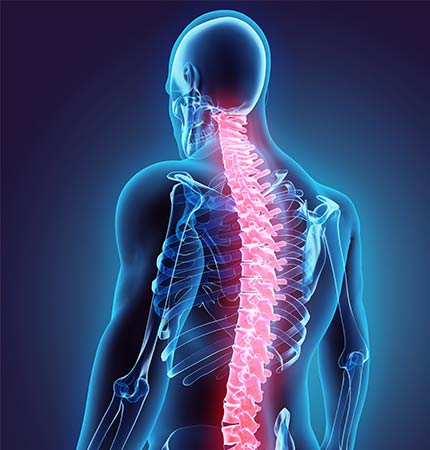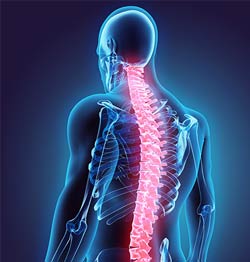Lateral Epicondylitis (Tennis Elbow) Treatment Specialist Serving DFW, Frisco, Sunnyvale and Mesquite, TX
Tennis elbow, also known as lateral epicondylitis, is a disorder caused by overuse of the forearm muscles. If you suspect you’re suffering from tennis elbow, visit Dr. Andrew H. Morchower, M.D., M.P.H., at OmniSpine Pain Management, who specializes in managing pain and restoring elbow functionality. For more information, contact us or book an appointment online. We have convenient locations to serve you in Frisco, TX, Sunnyvale, TX, and Mesquite, TX.




Table of Contents:
What is tennis elbow?
What causes tennis elbow?
What are the symptoms of tennis elbow?
How is tennis elbow diagnosed?
Tennis elbow, also known as lateral epicondylitis, causes pain and inflammation in the outer part of the elbow. Despite its name, you don’t have to be a tennis player to develop this condition. It can affect anyone who repetitively uses their forearm muscles, such as painters, plumbers, and even office workers.
The symptoms of tennis elbow typically include pain and tenderness on the outer side of the elbow, which may worsen with gripping or lifting objects. You may also experience weakness in your forearm and difficulty performing everyday tasks. Fortunately, most cases of tennis elbow can be effectively managed with treatments such as rest, ice, physical therapy exercises, and the use of a brace or splint. In more severe or persistent cases, interventions such as corticosteroid injections or surgery may be recommended.
If you’re experiencing symptoms of tennis elbow, it’s advised to consult a pain specialist for an accurate diagnosis and comprehensive treatment plan.
Tennis elbow is typically caused by overuse or repetitive strain on the tendons that attach to the outside of the elbow. This condition commonly occurs in people who engage in activities or work jobs that involve repetitive forearm movements.
The main culprit behind tennis elbow is the repeated contraction of the forearm muscles, leading to small tears in the tendons. This can be the result of activities such as playing tennis, painting, typing, gardening, or using tools that require a strong grip. Repeated stress on the tendons causes inflammation, pain, and discomfort.
Certain factors can increase the risk of tennis elbow, including age, occupation, improper technique or equipment used during physical activity, and inadequate conditioning or muscle strength. Taking breaks, using proper technique, and incorporating strengthening exercises for the forearm muscles will reduce the risk of developing tennis elbow. If symptoms persist or worsen, seeking medical advice from a healthcare professional is recommended.
Tennis elbow is characterized by several distinct symptoms that affect the outside of the elbow and the surrounding area. The most common symptoms include:
● Pain – The primary symptom of tennis elbow is pain on the outside of the elbow. It may start as mild discomfort and intensify over time. The pain may radiate to the forearm and wrist.
● Tenderness – The area around the bony prominence of the elbow, known as the lateral epicondyle, can become tender to the touch.
● Weakness – People with tennis elbow often experience weakness in their grip strength. This can make it difficult to perform activities that require a strong grip such as lifting objects.
● Stiffness – Some people experience stiffness in the elbow joint, making it challenging to fully extend or flex the arm.
If you experience persistent or worsening discomfort in your elbow, it’s wise to consult a healthcare professional for an accurate diagnosis and appropriate treatment. Our team is here to alleviate your pain by providing comprehensive treatment options.
Diagnosing tennis elbow involves a comprehensive evaluation by a healthcare professional, preferably a pain specialist. During the diagnosis process, the following steps will occur:
● Medical history intake – The healthcare professional will discuss your symptoms and medical history. They will inquire about any recent activities or sports participation that may have contributed to tennis elbow.
● Physical examination – A physical examination of the affected elbow will be performed. The healthcare professional will assess the area for tenderness, pain, and swelling, as well as test your range of motion. They will also conduct specific tests to evaluate the forearm muscles’ strength.
● Imaging tests – In some cases, imaging tests like X-rays or MRI scans may be ordered to rule out other possible causes of elbow pain and to assess the severity of the condition.
● Differential diagnosis – The healthcare professional will differentiate tennis elbow from other conditions that cause similar symptoms, such as golfer’s elbow, nerve entrapment, and arthritis.
Based on the information gathered from these steps, the healthcare team can accurately diagnose tennis elbow.
Lateral Epicondylitis treatment specialists are available at OmniSpine Pain Management. For more information, contact us or book an appointment online. You can visit us at our clinics located in Frisco, TX, Sunnyvale, TX, and Mesquite, TX. We serve patients from Dallas TX, Frisco TX, Mesquite TX, Sunnyvale TX, Plano TX, Garland TX, Forney TX, Cedar Hill TX, Denton TX, Balch Springs TX, and surrounding areas.
Check Out Our 5 Star Reviews






